
Startup Branding: How Much It Will Cost You & How to DIY


To stand out in the midst of ever-increasing startups, you need an impeccable branding strategy for your new entrepreneurial venture.
Because of intense competition, and a long journey fraught with challenges, you need to work hard to develop your start brand identity to bring your vision to life.
If you don’t have a graphic design background, logos and brand guidelines may seem overwhelming.
In this blog, we discuss everything from the elements included in startup branding, the costs associated with it, and how you can completely do it yourself with minimal costs.
When it comes to starting a business, one of the most crucial elements is branding.
Startup branding is a multi-dimensional analysis of the market, consumers, niches, and product qualities that can attract customers.
Consistent brand marketing leads to brand recognition.
From the colors used in your marketing campaigns to your imagery, brand tone, mission statement, and values that you aim to live by every day, essentially everything about your brand contributes to your identity.
When you get your brand right from the start, marketing becomes a piece of cake! This is because your brand is a long-term marketing tool that influences your day-to-day marketing efforts.
Many businesses would rather save time and money by copying their competitors' identities or current online trends rather than investing in their own brand.
That doesn’t work.
If you don't build a successful and strong brand identity structure from scratch, you won't be able to promote a product or service effectively.
Even if your competitors have competitive pricing, and a strong customer base, an outstanding startup branding can persuade customers to choose your company's products and services over those of competitors.
Let’s look at an example. Apple is the epitome of a successful startup. It creates elegant, inventive computers that are highly unique, and unlike anything you’ve seen before.
Apple's brand stresses similar characteristics in its customers as it does in its products: being an Apple user means being original, imaginative, and creative.
It highlights the value of its products and the relationship it has with its customers. Its unique marketing strategy has helped it grow to its multi-billion empire.
Emphasizing your branding techniques from the beginning will help you create a unique, long-lasting, consistent brand identity for yourself.

A brand is so much more than just a set of colors and a logo. A consistent brand identity impacts your product development cycle and corporate culture as well as communicates your company's values and goals to customers.
Your brand consists of various elements discussed below.
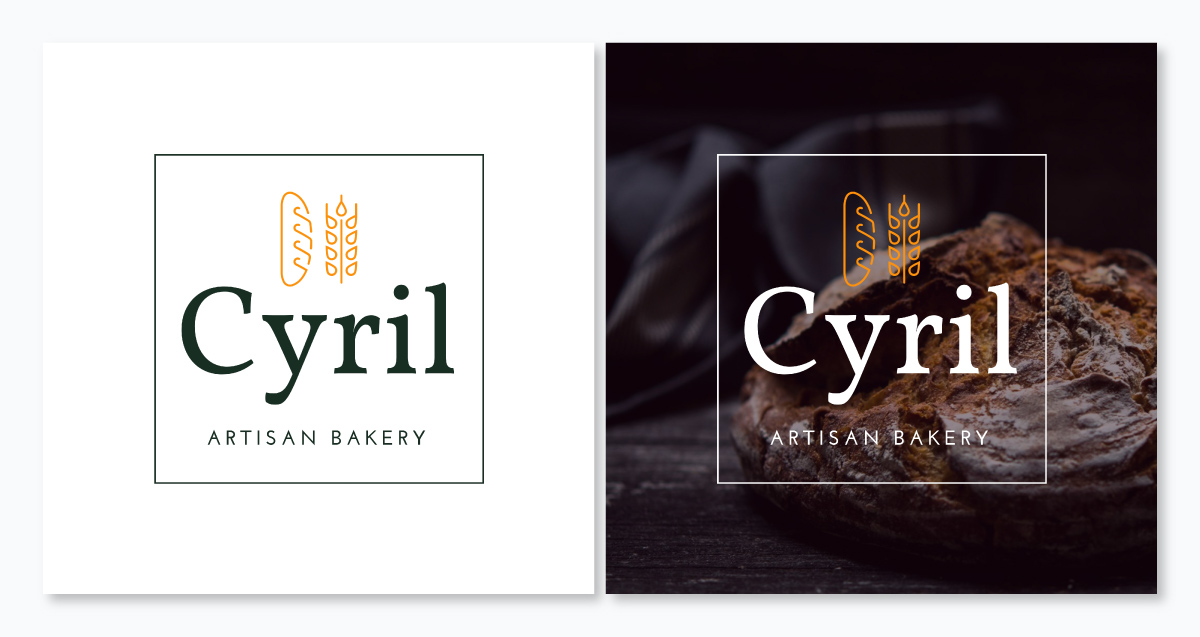
In simple words, a logo is a visual trademark that distinguishes a brand through its design components.
It is a brand's entire personality condensed into a single, easily recognizable image. When you see that brand again, it's often the initial engagement you have with it; the impression that lingers in your memory and brings back recollections (good, negative, or apathetic) about it.
Your company's logo appears on practically every asset it owns, including business cards, a website, goods, social networking sites, any branded templates you use, and all advertising and marketing materials. As a result, your logo should contain the core of your brand identity and symbolize what your company stands for.
In addition to brand awareness, logos perform a number of significant roles in small business branding:
With the help of Visme’s logo maker, you can create the most appropriate logo for your brand—whether you're starting from scratch, redesigning your logo, or revamping your website.
Color is powerful.
Different colors elicit different emotions within people.
Consider the color red. Error, danger, stop, aid, hurry, and so on are common words that come to mind.
Colors are a crucial component of every brand's identity. Customers seek out things that reflect their own personalities. They make better purchasing judgments when you define your brand personality, and they also let you target the relevant audience.
Every brand, like colors, has its own personality. Cashiers at Sephora wear a single black glove to handle items before handing them on to clients.
Consumers can easily identify a brand based only on color. Tiffany & Co. patented their robin egg blue in 1998 for this very reason.
Choosing the right color for your business provides a deep understanding of your brand's image and the target audience. After that, you just need to incorporate that brand color into all your graphics.
You can do this by importing your brand into Visme via the Brand Wizard so you have easy access to your branded colors.
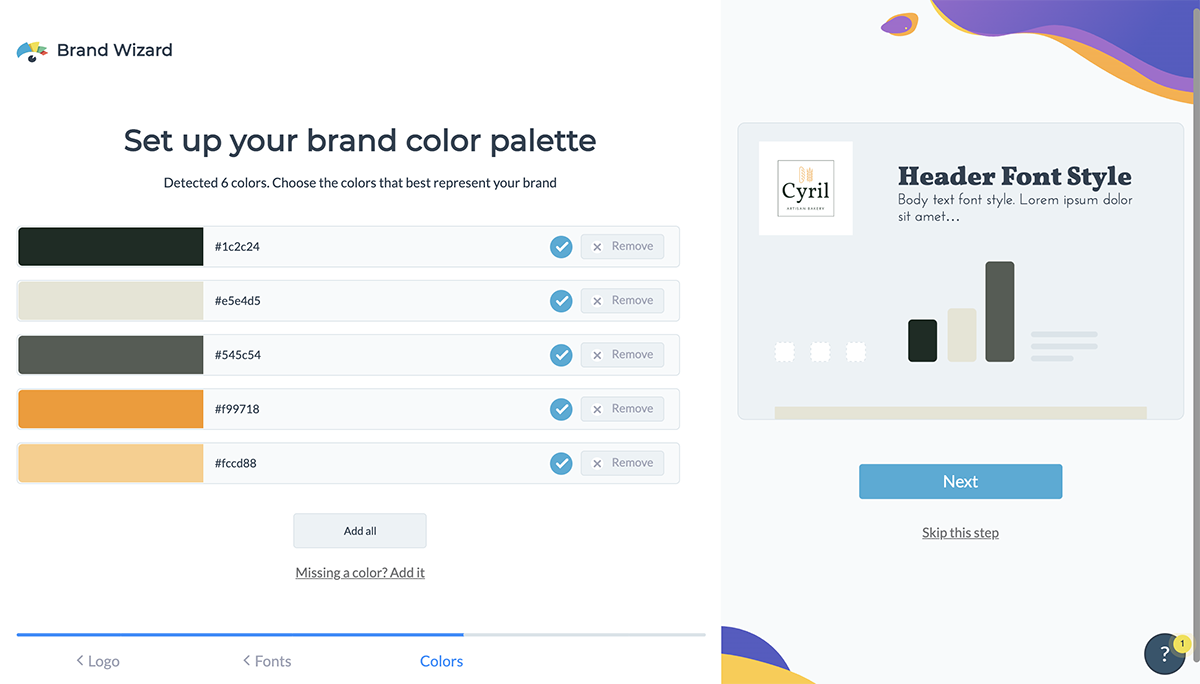
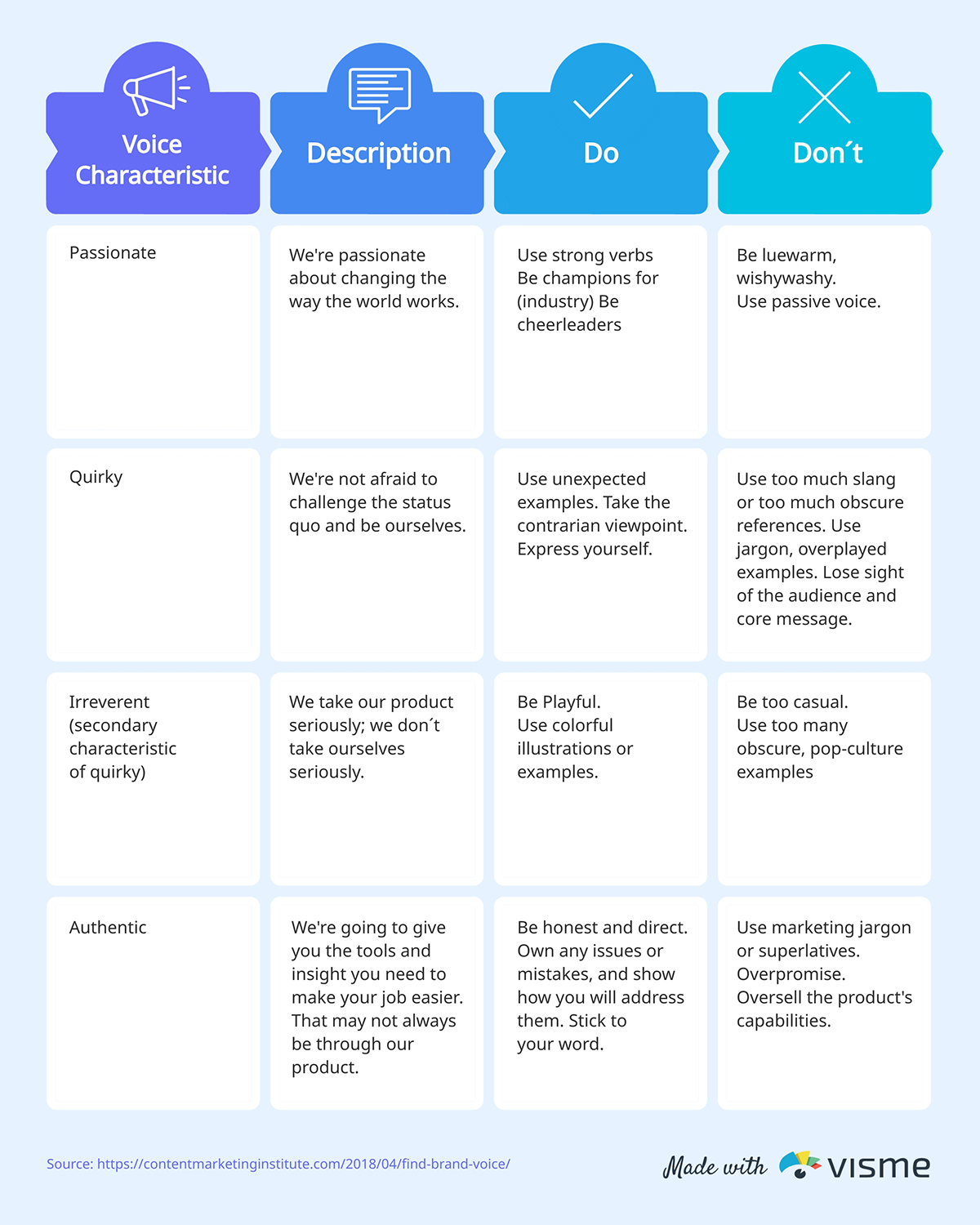
A brand's tone of voice includes specific jargon.
The tone of voice of a brand is the thing you notice in all of the copy they produce, such as emails, website content, and social media lingo.
One of the most effective ways to transform how the world views your brand is through your tone of voice.
The simplest way to determine your brand voice is to take a piece of paper and jot down every single phrase that comes to mind while you consider your brand story and your brand personality.
Honesty, quality, loyalty, money, people, family, respect, growth, reliability, speed, patience. There's no right answer. Just analyze the words you have written and consider how you want your brand tone to be.
Wendy's is an example of a brand that has carved out a new personality through the development of a consistent, distinct social media persona.
“Eat fresh.”
“Just do it!”
“Think different.”
“I’m lovin’ it.”
“It's finger-lickin’ good.”
How many of the brands did you recognize from above?
A memorable slogan summarizes your brand's perspective in a few words. It should reflect the core personality of your company, and be memorable.
Your logo's tagline gives more details and context. It not only tells people what you do, but it also tells them what they may expect.
The phrase you chose should be able to survive the growth of your brand through time, but only within reason. Although you shouldn't alter your slogan every year (you wouldn’t want to confuse your clients!) you should update your image and make sure the phrase reflects the core values you stand for and how your target audience perceives you.
P.S If your company deals with something as serious as finances or legal matters, don’t come up with a funny catchphrase. This may send a carefree or sloppy indication to your customers.

Font matters.
A well-chosen branded font is the glue that holds your company together.
By giving your brand a voice and personality, fonts help you convey a narrative.
They tell a story to whoever hears your brand name. Good typography can captivate your readers in print or online, while a terrible one can make them cringe, and drive them away.
The font is so essential that it communicates something to a customer even before they read the message in your campaign.
This is what makes choosing your font for your startup brand so important. After all, it's not just what you say that matters, but also how you say it. You may attract ideal customers by using fonts that match your brand's values—traditional or quirky, humorous or official.
Consider your brand personality. What’s your brand's tone of voice?
If your brand voice is welcoming, rounded typefaces that are easy to read can be a good choice. If your brand language is assertive, bold, condensed typefaces may be appropriate. Maybe all capital letters?
Consider how each font makes you feel as you browse through your alternatives, then thoroughly decide about what suits your brand accordingly.
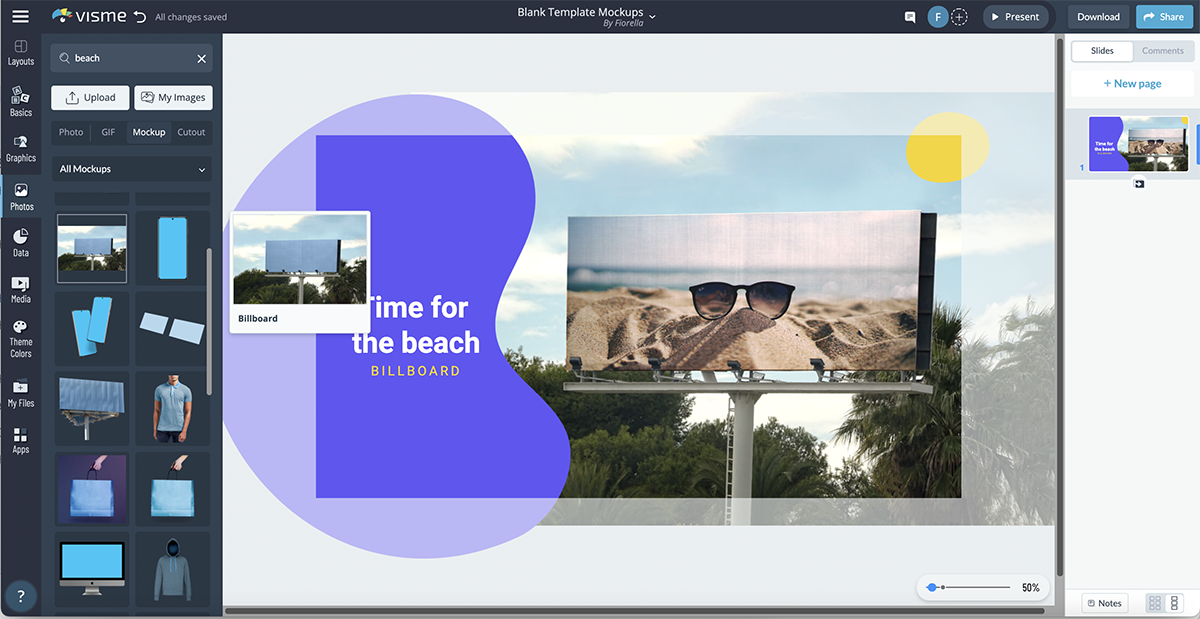
All the images used in branding, marketing, and advertising are considered imagery. This isn't your logo or the content you publish; it's the photographs and stock images you use, the design of your website and other brand assets, and your overall brand aesthetic.
Color and shape, for example, are directly associated with brand iconography.
Though billboards and print media advertising indicate that brand imagery has always played a part in branding, it is indisputable that thanks to social media, imagery now plays a substantially more critical element.
Images, when used correctly, can strengthen a customer's (or potential customer's) bond with your company. It's just as vital creating an emotional connection with your brand as it is to create brand imagery that connects customers with it. Consider how you can build brand experiences with your imagery.
Evaluate your ideal customer: what is most important to him/her? What does his/her typical day entail? You can find better pictures that your audience will respond to if you can visualize that individual and figure out what they want. Recognize and understand your competitors, and attempt to differentiate yourself from them.
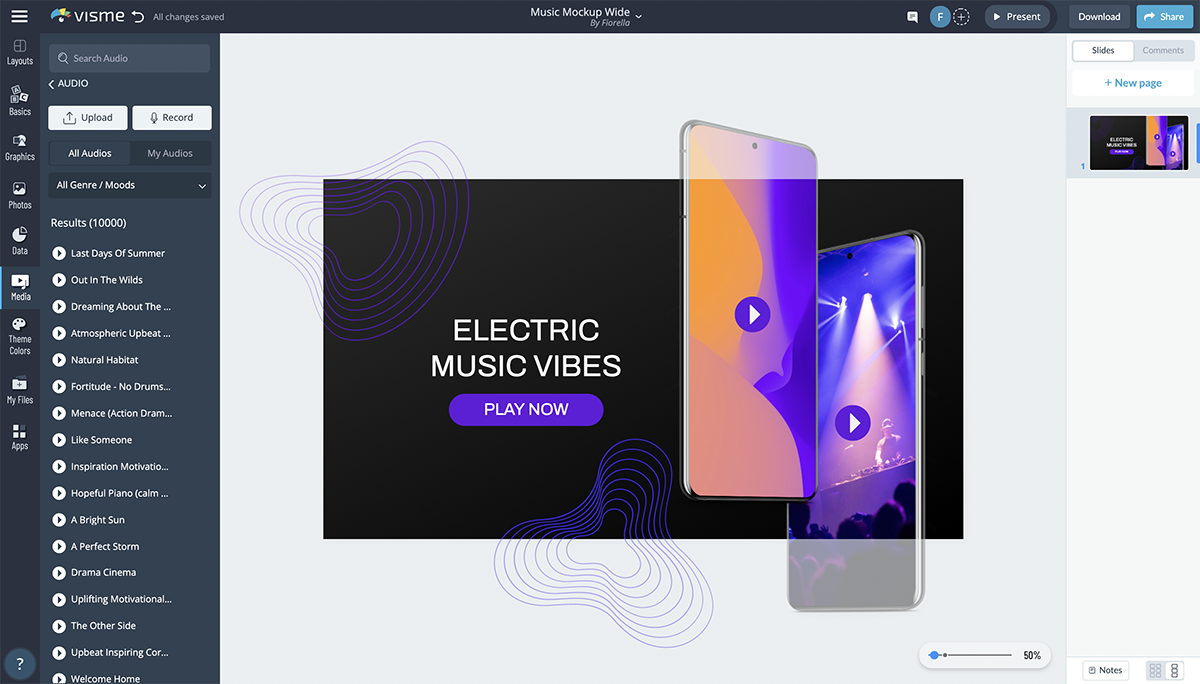
Sound, or a distinct set of notes or tones, can also help a business establish its identity.
A jingle or a tune may come to mind when a certain brand is discussed, although it can also comprise recorded phrases, speech, and short musical sentences as well.
The sound branding that goes along with the Netflix or HBO logos at the start of our favorite episodes is instantly recognizable.
As you can see, creating a brand entails so much more than just creating a logo!
Your brand identity is a three-dimensional collection of design choices, assets, and one-of-a-kind branding pieces that work together to give your company its distinct appearance and feel. If you're building a brand identity, don't rush it or neglect to design any of its parts. You can work with Visme’s Brand Kit to create consistent designs every time.
Since the Brand Kit is accessible to your entire team, anyone (however novice they may be!) can go and design branded graphics with a pre-defined brand book that contains appropriate guidelines.
Now that we’ve discussed the importance of branding for a startup, let’s discuss how much will this cost you.
A well-positioned beautifully presented brand with a captivating brand story may provide a startup with a significant competitive edge.
However, it is vital to plan ahead of time and budget for this investment.
Spending too much, too soon can deplete a company's financial resources, preventing it from growing. If you invest too little, too late, your tech startup may fall short of its full potential or vanish in a competitive market.
Let’s discuss the costs associated with branding your start-up.

Let’s discuss the specificity of these costs in detail and what’s the best option for your brand.
Starting up is exhilarating.
From brand positioning, website development, to providing the actual products or services, it’s hard work.
It’s no wonder that 90% of the startups fail. Some don’t meet the product-market fit. Some dive in too deep too soon.
There's nothing more agonizing than discovering you've made something fantastic but can't manage to get anyone to notice you, let alone care. After that, you must reassemble yourself in order to determine what went wrong.
One of the most common early-stage company blunders is focusing solely on the surface of a brand, only to have to start all over again when marketing efforts fail. This is why you must tread carefully and evaluate the costs to make a thorough decision.
Let’s discuss the costs associated with branding in detail:
Logo Design
With more logo variants, more brands, and a higher level of information needed in your visual guide, the higher the price. Repeated feedback and iteration, as well as the size of the team you hire, contribute to the cost.
If you have the money, you could work with a professional designer or design agency. The logo is arguably the most visible, and important part of the brand, so it’s important to make sure you get this right.
Website Design
This is the branding component with the highest cost flexibility. Some projects cost more as more user research, prototyping, content production, and technical labor is required. The cost is determined by the complexity of your project.
With the introduction of WordPress, Squarespace, and Shopify, you don’t need need to worry about developing the website from the ground. These platforms can get you up and running in no time at all at a minimal cost!
Brand Aesthetics & Tone
The way you deliver your message – the imagery, brand aesthetics, and the tone of voice you use – will affect how you communicate across all platforms.
You can hire a content marketer to develop a brand style guide. This will serve as a guideline for anyone creating business content, as well as those in charge of your social media and customer care channels.
For startups, you could hire freelancers to write your content marketing copy, and graphic designers to create your visuals according to the specified brand guidelines.
The second option is simple. Doing everything yourself.
It may seem quite overwhelming, but trust me, it’s not. There are so many (free and paid) tools out there, with which you can do your startup's branding like it’s as easy as pie!

Now let’s say you’re launching a SaaS platform, and you want to perfect your brand all by yourself. I’m going to walk you through the process of creating your brand identity for your brand in a way that’s most cost-effective.
Let’s dive in.
Create a Visme account, and sign up for a Business Plan. Click on My Brand in the left navigation sidebar, then find Brand Wizard to get started.
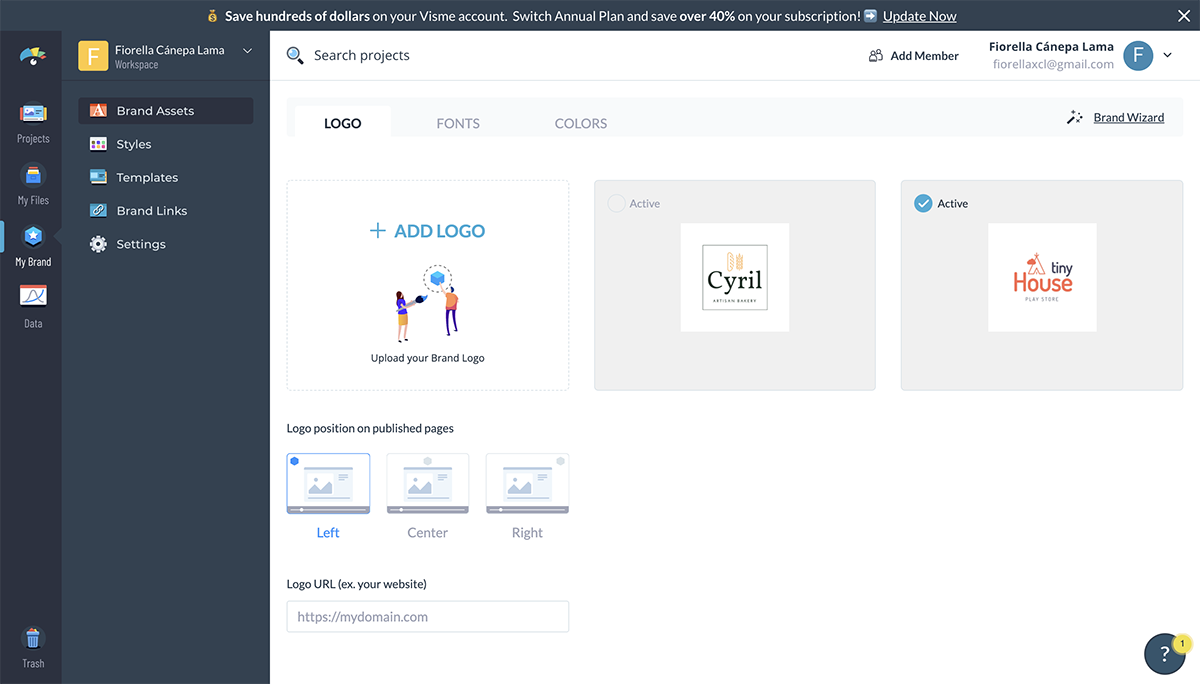
Once you're inside the Brand Wizard, all you need to do is paste in your website URL and watch the wizard work its magic.
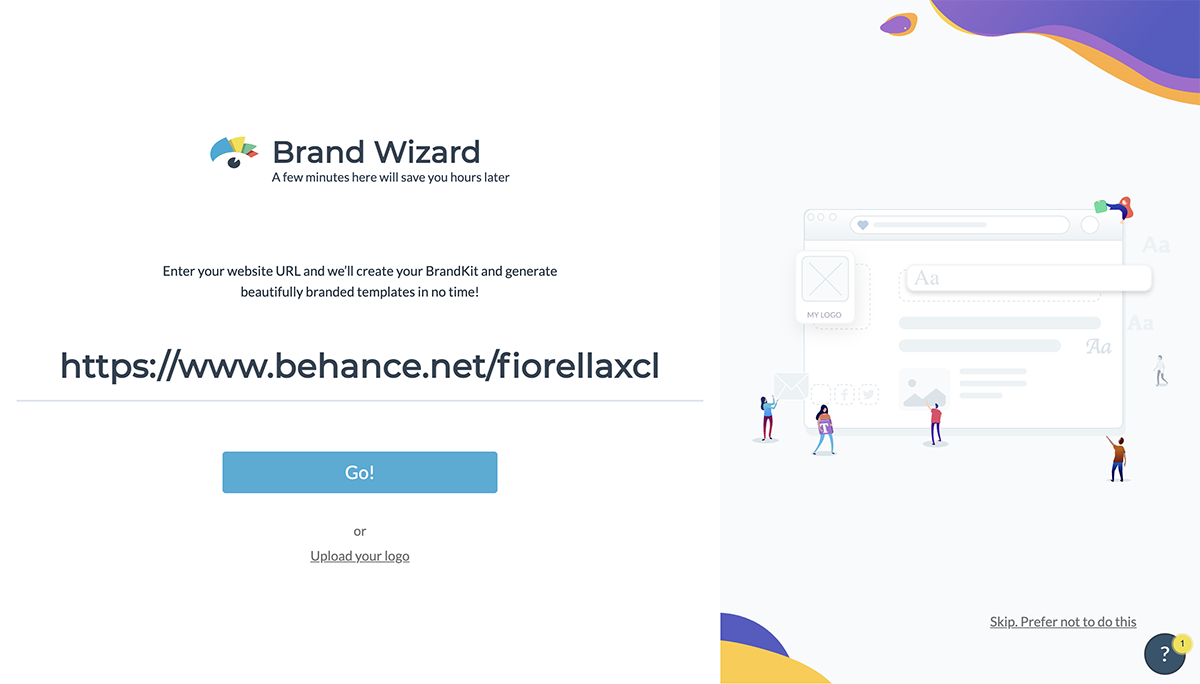
The first thing the Brand Wizard will pull is your brand logo. If you haven't created one yet, you can easily do so with Visme's logo maker and upload it to your site before getting started with the Brand Wizard.

Choosing fonts is the first step in creating your brand kit. Visme provides a library of over 300 fonts, but you can also select or upload your own using the Brand Wizard.
After selecting your logo, it'll pull your website's most prominent fonts so that you can add them to your brand kit. Upload any that aren't already in Visme so you can easily access them in your future designs.
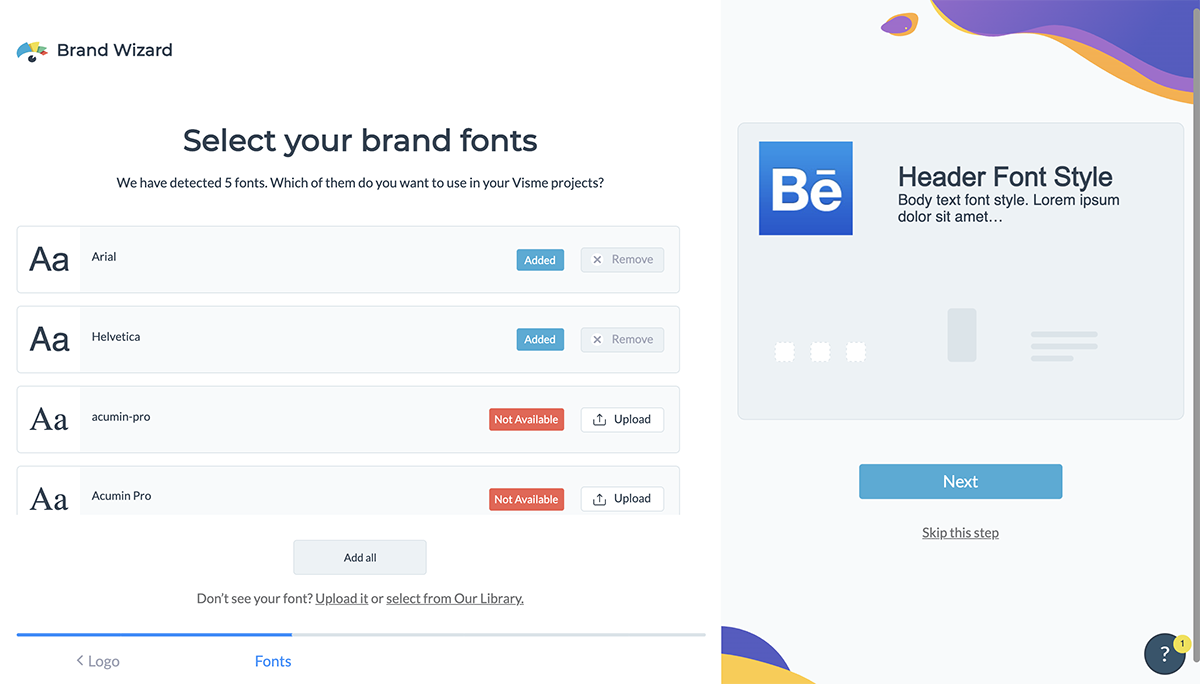
As discussed earlier, your brand's color palette is essential to set visual tone and language. The Brand Wizard will pull the main colors from your website so you can choose the ones that are a part of your primary or secondary color scheme.

Add any colors that are missing by pasting in the proper hex code.
After you've imported all of your brand assets, it's time to select a theme for your branded templates and marketing materials. We have three for you to choose from: Modern, Simple and Creative.
Select the theme that best matches the vision you have for your branded graphics.
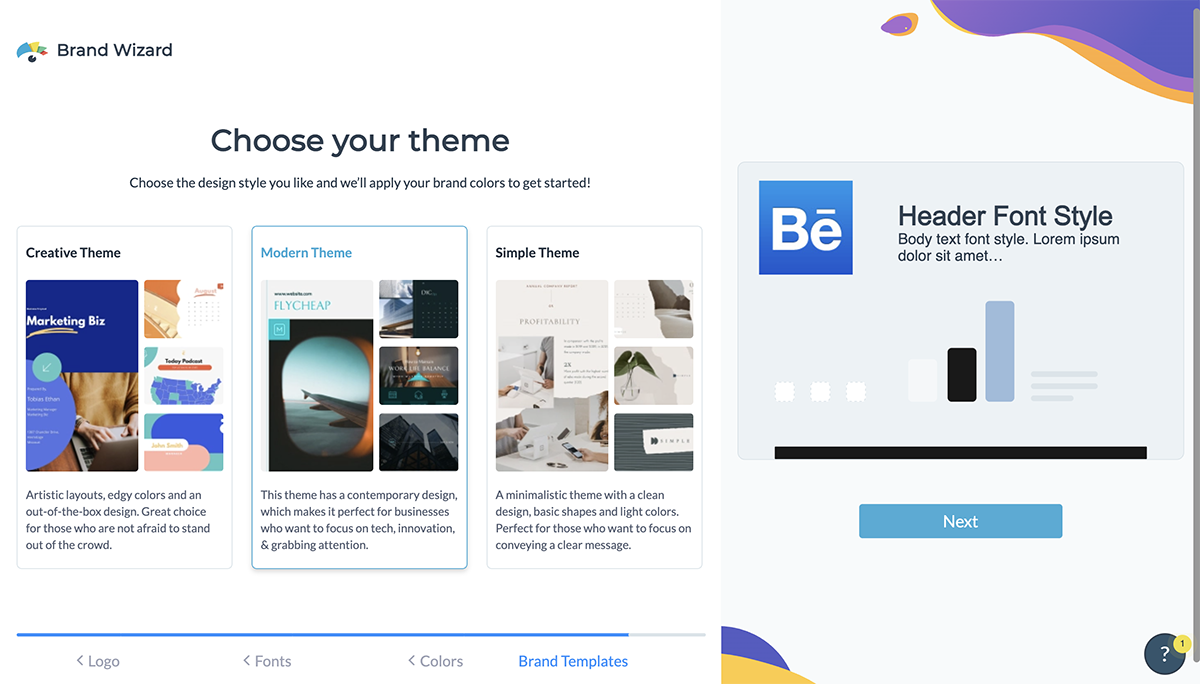
From here, you get access to a complete bundle of templates that have been automatically branded with your logo, colors and fonts.
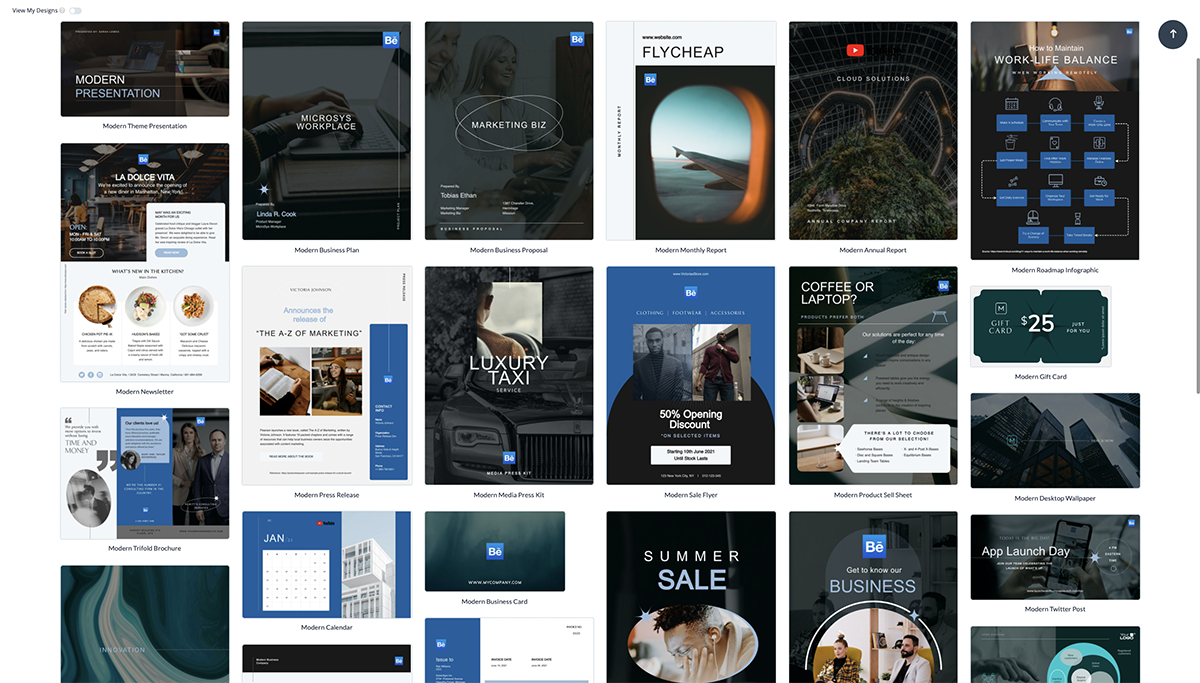
You can always access these under the Branded Templates tab in the templates library.
Choose the template you want to customize for your business or marketing needs, and get started designing.
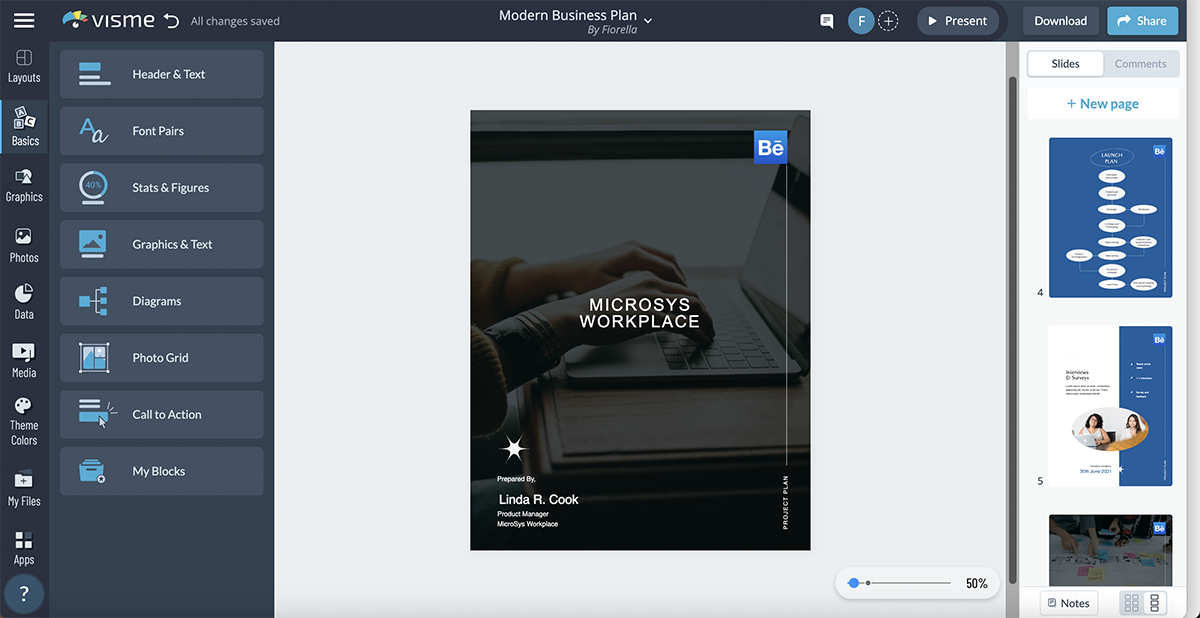
It doesn't have to be difficult to create your brand identity.
In fact, it could be an exciting process that helps in the development of your brand's visual identity.
You might employ one of the world's top branding companies, or you could enlist the help of a family member who is an accomplished designer, or you could completely do it yourself with Visme’s brand design tool.
Regardless of who you work with, branding is an important aspect of your business that will help you understand and explain who you are.
Design visual brand experiences for your business whether you are a seasoned designer or a total novice.
Try Visme for free